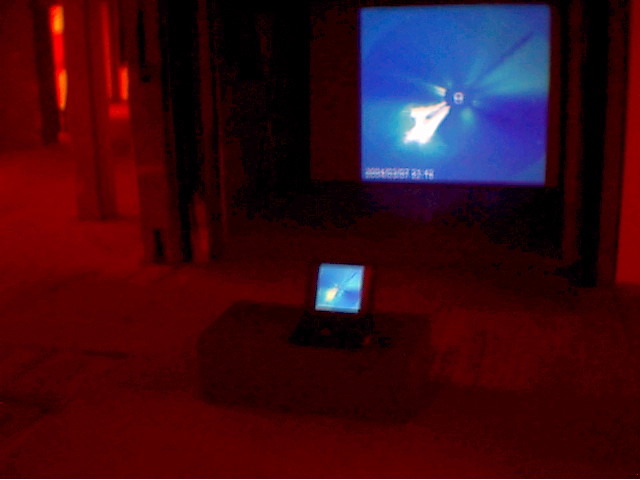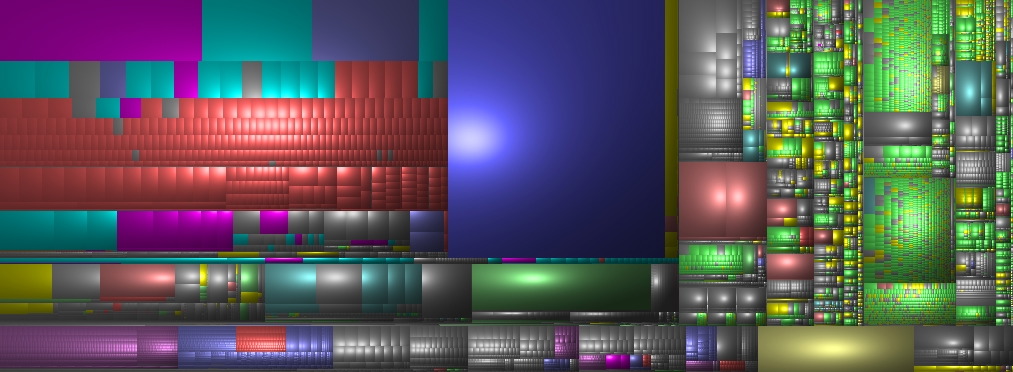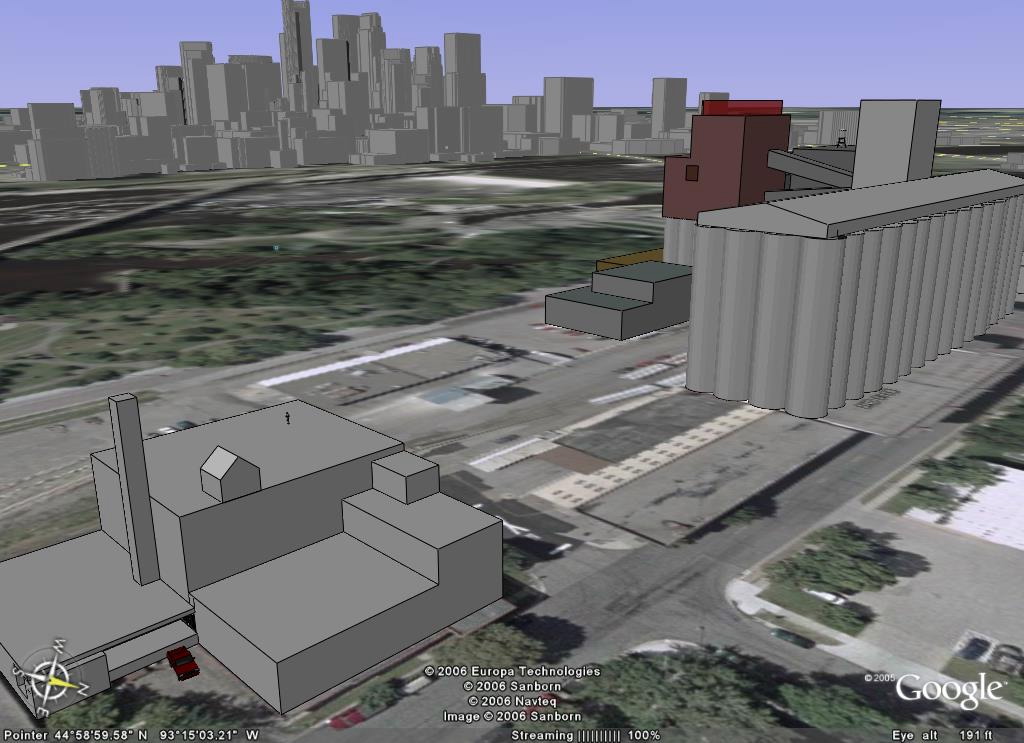My Work Is a Life of Art: Ray Rolfe
Arts journalist Will Conley recently engaged artist Ray Rolfe in an extended email dialogue. These were his findings.




Artist Ray Rolfe sees himself as a classic rags-to-riches story waiting to happen. This artist creates almost as if creating were a nervous tick, something he must incorporate into every aspect of his daily life. He explores new media with the innocence of a child and the obsession of a scientist, and is reluctant to draw any boundaries that might separate art, politics, and life. Ray Rolfe’s creative output takes on many forms, from conceptual and Modernist installations full of sunshine and reckless abandon, to photographs of dirty snow sculptures, choppy home videos, and digitally manipulated still images.
He also has a background in straightforward painting and drawing, and has tried his hand at punk rock music and travel writing. He maintains a blog and participates regularly in a number of artistic and civic online forums. He does not limit himself to any one medium, or any media for that matter, and makes little fuss over the short-term economic concerns of being an artist. The 28-year-old artist’s hopes tend towards the stratospheric.
“My work is a life of art,” Rolfe has said. He could have been the inspiration for movies like Amelie and The Science of Sleep, in which the protagonists are presented as fountainheads of creative activity, fusing art and life in such a way that you can’t tell where the art stops and the life begins. Once, Rolfe switched the contents of a gallery with items he found on the street, so that viewers would find themselves out-of-place no matter where they were standing.
Much of Rolfe’s work is temporary. A description found on Rolfe’s mnartists.org gallery page of the installation “Solar Projector (Assassinations of the Sun)” is very telling in this regard:
The sun was projected into the elevator shaft. Projection was complementary to a listen of the Flaming Lips song ‘Assassination of the Sun’. This experience was performed only once, late night for a friend.
The photographic documentation probably does little justice to the exclusive performance for an audience of one. For years, Rolfe lived in his RV parked outside the Soap Factory, the gallery in which the aforementioned work occurred, and where he volunteered in almost every aspect of gallery operations. Among his contributions to the gallery, Rolfe reports that he
Organized shows, installed works, positioned lighting, cleaned, painted walls, constructed stages, moved marble, took photos, recorded event videos, built things, destroyed things, took measurements, ran equipment, provided security, welcomed artists, answered phones, provided history, rearranged junk on the second floor, sold playing cards, liberated those derby cars from the basement, inhabited myself for S.A.I.T , sewed little cars to elastic bands for Ian Burns, showed cosmic imagery to Wilbur Williams, walked across the Stone Arch Bridge with Athena Robels, baked cookies and drove a James J. Hills train for LANDMARK, brought Ben up on the rooftop for his first time, drank all the beer, watched the Guthrie being built, and so much more I’ll never forget.
Rolfe’s research into emerging technologies is one of his more consistent pursuits. To his credit, he was among those chosen to speak at the MINERVA (Minnesota Electronic Resources in the Visual Arts) Conference in 2005. His latest find is that, in ten years, there is a chance we will all be walking around wearing special glasses that can superimpose 3D images onto our surroundings. For example, two people could be sitting at a coffee table playing a game of chess, with the disembodied kings and pawns battling it out in mid-air between them. Rolfe’s own forays into 3D imaging would inform such a technology. He recently added the Pillsbury Mills and the Soap Factory to the Google Earth skyline.
Particularly intriguing is his obsession with superimposing geodesic domes onto photographs of buildings like the Guthrie Theater and the Lake Street Sears Building. The idea is to encourage developers to build the geodesic domes on top of preexisting buildings, house botanical gardens inside them, and enjoy the warm feelings that come from improving the aesthetics and ecology of a cityscape in one fell architectural swoop.
For example, the print “The Code Allows It” is a geodesic dome superimposed onto a photograph of the new Guthrie Theater, then under construction. According to Rolfe, the title is a usurpation of a common catchphrase used by certain developers to justify building anything they want, wherever they want, no matter how it affects the community. That work originally appeared in the Minneapolis Institute of the Arts, and is now entombed in a time capsule beneath the same museum.
He has even suggested that geodesic domes would be integral to terraforming moons and planets.
Back on Earth, Rolfe’s biggest cash cow to date was a series of photographs of faces humorously doctored to become cats. Rumor has it someone from the Museum of Contemporary Art in Chicago bought one of these little ten-dollar jobbies out of the Outsiders and Others gallery in which it appeared.
Lately, his video camera has been his best friend. It goes everywhere with him. Case in point: his first-person video account of riding the Texas Giant rollercoaster at Six Flags Great Adventure. View it as a metaphor for how tumultuous his life can really be. For his more explicitly innocent side, view his footage of a possum, recorded in Pillsbury Park near the waterfall. He had never seen a possum before. You can hear him responding to someone else who is speculating on what the thing is: “Holy crap, that thing is weird! What the?” “What is that thing?” “I dunno, a huge muskrat? I don’t think they get that big!” His interest at seeing something for the first time is infectious.
Enter into Rolfe’s work at any point. You can view a large segment of his work right here on mnartists.org. His YouTube profile displays some of his quirky video offerings. There is plenty to keep you intrigued and following along Ray Rolfe’s winding road for a good few days. Recently, when asked to describe his “dream art show”, this was one of his many responses:
We will gather in the year 2009 at the Minneapolis Metaverse Theater, otherwise known as our thrilling new Planetarium. There, we will be able to see an entire cartographic temporal progression of the cities’ entire history. From the settlement of St. Anthony Falls, to the Mill City, to modern day. We will watch history from undiscovered perspectives and realize subtle untold narratives of art and human experience. In this theater of digital time travel, we are enabled to roam the mind space of the visionaries. What was the city like that inspired Leroy Buffington? Or James J. Hill? We fly to a view over his drafting table. Or follow William Henry Illingworth on a photography job.
Anybody want to fund that? Call Ray Rolfe.